Special exhibition “Idemitsu Art Award Artist Selection 2022”
“Idemitsu Art Award Artist Selection 2022” is a special exhibition aimed at continuing to support artists even after winning or being selected for the former Shell Art Award.
New and recent works by four young artists selected by the judges of this award will be exhibited at the exhibition venue of “Idemitsu Art Award Exhibition 2022” to be held in December. This time, the 11th time, we selected four people: Aya Kurashiki, Misono Nakao, Rie Nagai, and Eri Fukuda.
*The “Idemitsu Art Award” was renamed from the “Shell Art Award” in April 2022.
Eriko Kimura Jury Recommended Author: Aya Kurashiki
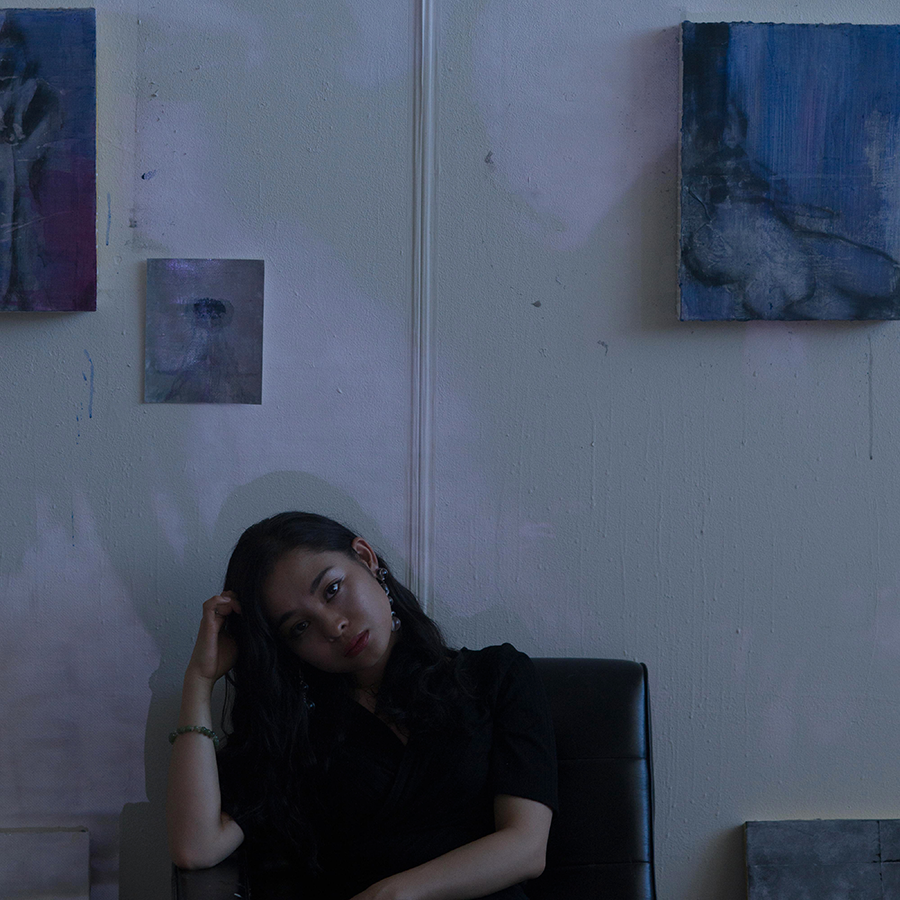
Photographer: Takehide Niitsuho
Career
| 1993 | Born in Hyogo Prefecture, currently based in Kyoto and Tokyo |
|---|---|
| 2018 | Completed graduate school at Kyoto University of Art and Design |
| 2020 |
Completed graduate school at Tokyo University of the Arts 26th student of the Sato International Cultural Foundation. 3rd generation student of Kuma Foundation. |
exhibition
| 2021 | Solo exhibition “There is no poetry. It is not poetry.” (myheirloom, Tokyo) |
|---|---|
| 2022 | Group exhibition “((((”, (Komagome Soko, Tokyo) |
| 2022 | “Artists' Fair Kyoto2022” (Kyoto Shimbun, Kyoto) |
| 2022 | Solo exhibition “Shallow Relief, suddenly changing in the real world” (Wada Gallery, Tokyo) |
Awards etc.
| 2020 | Selected for Shell Art Award 2020 |
|---|---|
| 2021 | WATOWA ART AWARD Grand Prix |
Scheduled work “Transition #Ophelia”
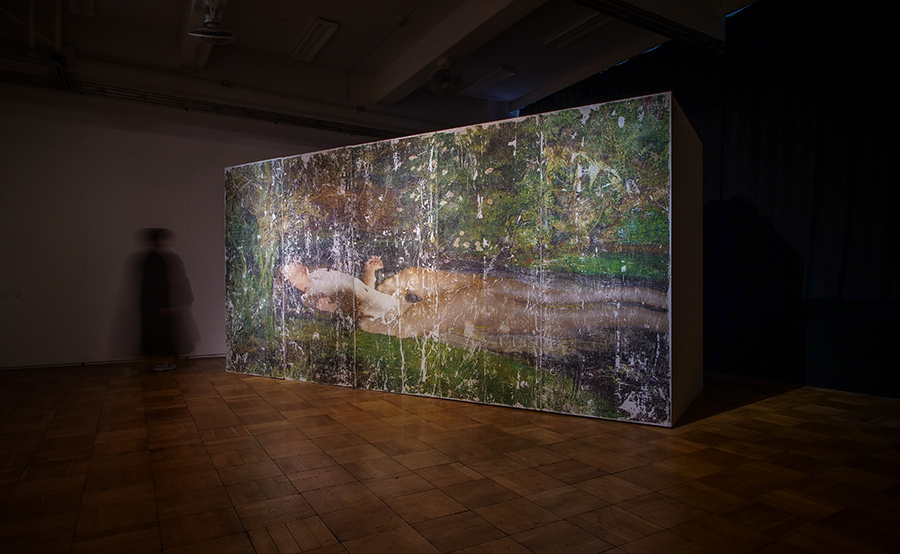
Technique: mixed media
260×500cm
About the work/production
Kurashiki has consistently thought about the distance from others as humans are completely cut off and isolated by the material wall of the body or the categorization that comes with it. In his works, he works with multiple media such as performances and installations, with a focus on two-dimensional works using transfer techniques, and attempts to explore close communication and coexistence with others, as well as fusion. For example, in response to the divisions that arise because we have separate bodies, I create pieces that even out the differences even a little, and aim for coexistence in the real world. Or, as its ultimate form, it is an act of production that aims for nirvana, where each individual being is freed from the body and exists as an individual, yet blends into and becomes one with the whole. Or, as a countermeasure to loneliness, the act of creating a temporary (or assumed) close relationship by interposing the work in some way between the viewer and himself.
Judge Kimura’s recommendation comment
Yasuya Kurashiki's works are of various types, including those that include performance elements and those that are created using three-dimensional structures. Among them, “Transition #Ophelia” and “Transition #Salome” are two-dimensional works that combine and transfer other existing images of modern Japan to paintings from art history, creating works with a slightly rough impression. It is a work.
Ophelia is a character in Shakespeare's play Hamlet, and Salome is a character in the New Testament. She has been depicted in plays and paintings as a woman who is obsessed with madness because she is trying to get her will through. Kurashiki recognizes here the image of women who have been sacrificed in the old male-centered society. The bodies of women appearing in adult videos are then superimposed on the images of women created by the convenience of heterosexual men in modern society. In addition to being a critical approach to the history of painting, this work can also be seen as an expression of self-reflection, thinking that, as a woman, she is also in the position of repeating the same history.
Naoko Sumi Jury Recommended Author: Misono Nakao
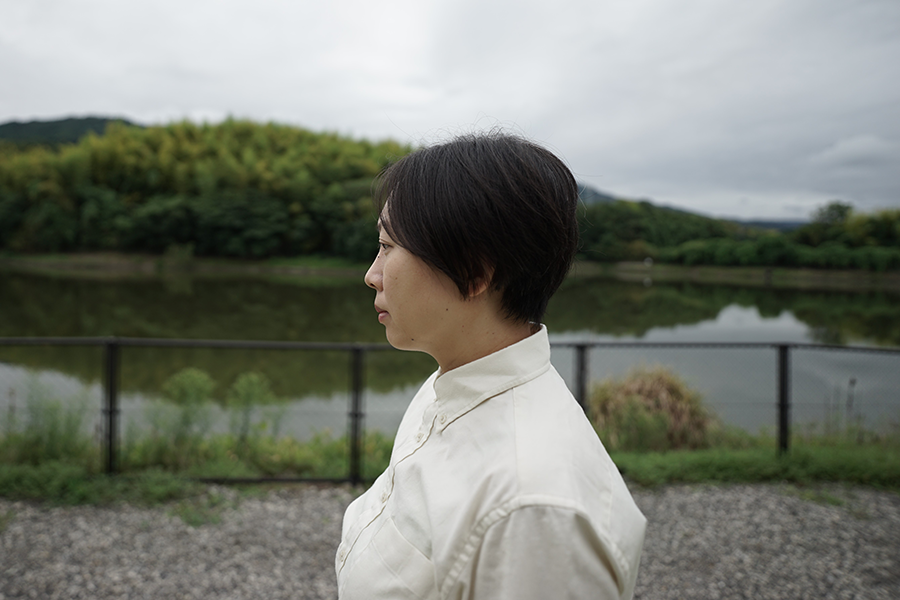
Career
| 1980 | Born in Osaka Prefecture |
|---|---|
| 2006 | Completed the Department of Conservation and Restoration, Graduate School of Fine Arts, Kyoto City University of Arts |
exhibition
| 2016 | Assemble Bridge Nagoya 2016 Contemporary Art Exhibition “Panorama Garden: Signs of a Dynamic Ecosystem” (Button Gallery, Aichi) |
|---|---|
| 2018 | “Transfer, Transfer,” (Gallery PARC, Kyoto) |
| 2019 | “SEIAN ARTS ATTENTION 12 Roots Routes Travelers” (Seian University of Art and Design, Shiga) |
| 2021 | “Voiceover: Voices that spin and play” (Shiga Prefectural Museum of Art, Shiga) |
| 2022 | “Pictures of a House” (Nara History, Arts and Culture Village, Nara) |
Scheduled work to be exhibited: “Kohaku no Hagire”
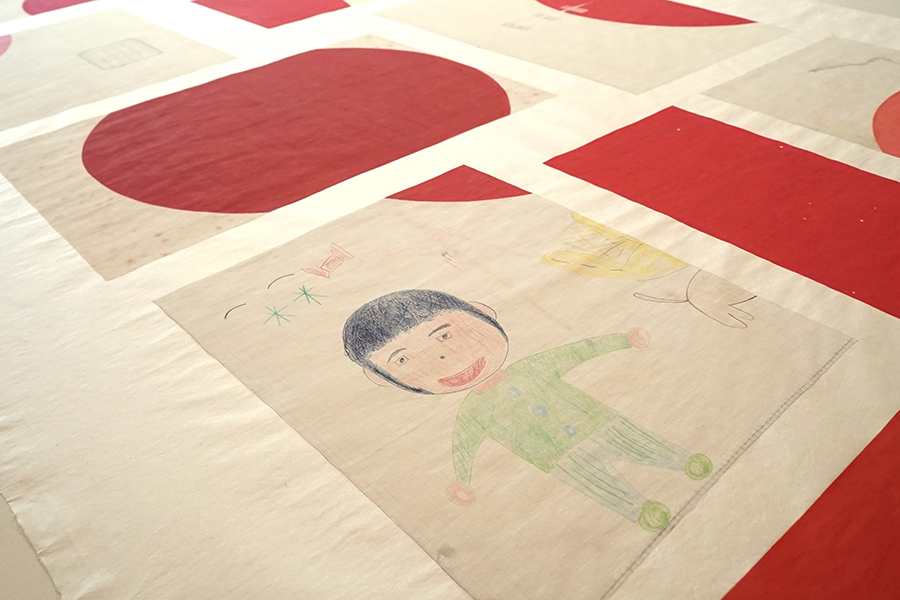
Techniques: Sumi ink, mineral pigments, Japanese paper, hanging scroll binding
Width: 268 x 96.2cm each
About the work/production
The exhibited work depicts the national flag removed from a house before it was demolished, and a fragmented house. “Red and White Hagire” is a double-width painting, one depicting the state as it is in full size, and the other depicting variations of changes that might occur to this national flag.
“Illustrations of a House” is made by collecting fragments of a house, assigning serial numbers to each fragment, and drawing them separately according to the layout of each room.
Imagining the “transition” that may occur in the future in things and the environment, I create works while moving back and forth between individuals and society, and time between past, present, and future.
Sumi judge recommendation comment
The works of Misono Nakao, who studied conservation and restoration at graduate school and has skills in copying classical paintings, are often exhibited in the form of picture scrolls and hanging scrolls, which are expressed using traditional Japanese painting techniques. What she is interested in painting are things that have disappeared or are disappearing. They are carefully observed and copied onto paper. The individual works created through so-called “research” appear to be placed very quietly or gracefully on display stands or in cases. Rather than being harsh, the things depicted there look so lively that you can almost feel the rustle at times, as if they are about to dance on the paper, and are very passionate. Nowadays, we can easily take pictures of everything with smartphones and keep them as records, but she still makes detailed hand-drawn copies of things. However, it does not end when a perfect copy is made. From there, the expression of my own work develops, culminating in an installation that is perfect. I'm looking forward to seeing what Nakao is trying to breathe life into again this time.
Meruro Washida recommended author Rie Nagai
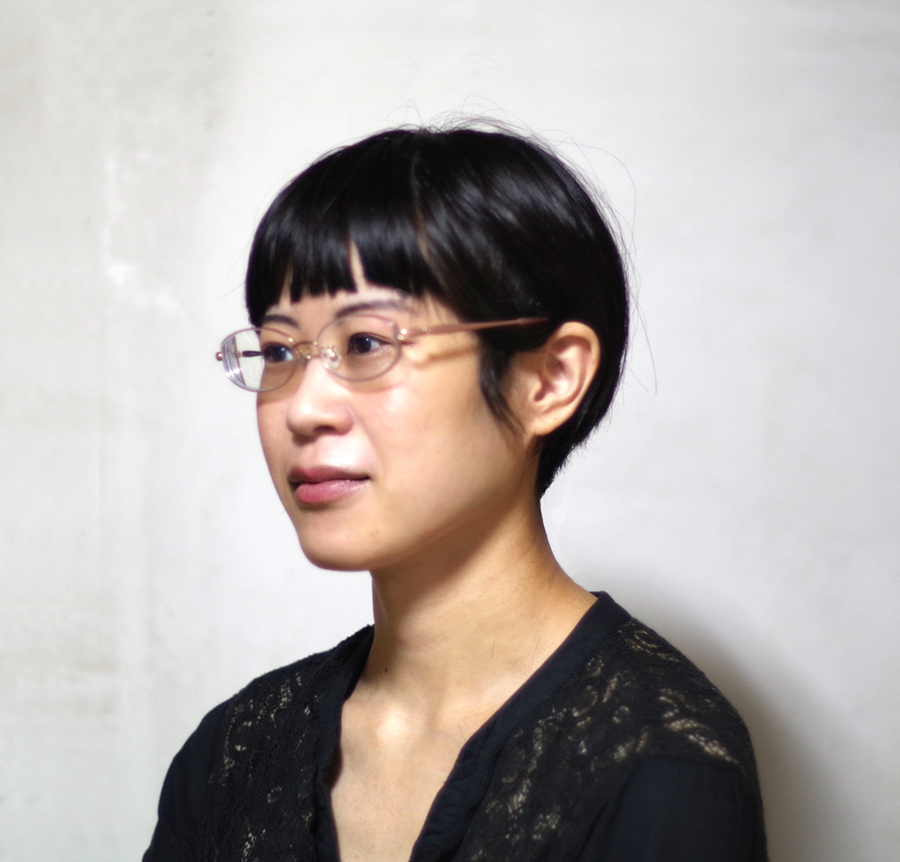
Career
| 1990 | Born in Gunma Prefecture |
|---|---|
| 2012 | Graduated from Tohoku University of Art and Design, Faculty of Art, Japanese Painting Course |
| 2014 | Completed master's program in Japanese painting at Tohoku University of Art and Design. |
exhibition
| 2015 | “The rising generation13 Rie Nagai Yuki Yanagisawa” (Shibukawa Art Museum, Gunma) |
|---|---|
| 2016 | “Shell Art Award Exhibition 2016” (The National Art Center, Tokyo) |
| 2017 | Solo exhibition “Area” (Gallery Suiroku, Gunma) |
| 2020 | Solo exhibition “Night” (Künstlerhaus Bethanien, Berlin) |
| 2021 | Solo exhibition “Nacht” (Gallery Suiroku, Gunma) |
| 2022 | “4 + 3 = 1” (SAVVY Contemporary, Berlin) |
| 2022 | Solo exhibition (Gallery Suiroku, Gunma) |
Awards etc.
| 2016 | Selected for Shell Art Award Exhibition 2016 |
|---|---|
| 2019 | Pola Art Foundation 2019 training in Germany as an overseas trainee for young artists |
Scheduled work “Night (52°30’39.9“N, 13°26’34.5”E, c.2X20)”
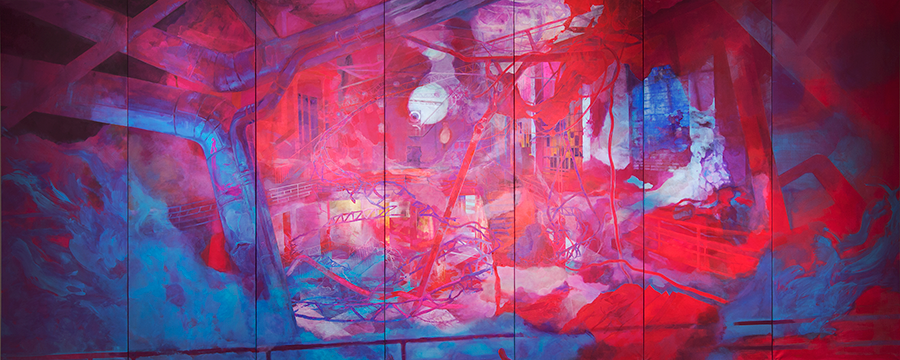
Technique: pigment, paper
265 x 665cm
About the work/production
Starting from the question “Where is the heart?”, I search for the answer in relation to the “place” and attempt to express the tremors of the hearts of the people who live there. In my eyes, places and communities have invisible rules and norms, and they seem to have a strong force that influences the thinking of the people there. Interpret it through color and movement. I hope that the vivid colors and stirrings of emotion will help the viewer to decipher the power of the place and the movement of the viewer's own heart.
Judge Washida’s recommendation comment
When I first saw Rie Nagai's work, at first glance it looked like a Japanese painting that an art college student might have painted. While attempting to update the genre of “Japanese paintings” by depicting modern everyday motifs such as roads with guardrails, cars, and glass bottles, rather than the traditional depictions of flowers, birds, wind, and the moon, he also created carefully drawn landscapes and The figurative nature of the still life is a painting that seems to have become stylized without breaking the frame. However, as I watched the silver color of the foil and the red color of the pigment used intertwine on a large screen, I began to feel that there was more to Nagai's work than just that. This seemed to be due to the expanse of the space depicted, and it also seemed to be due to the emptiness of the lack of people in places where many people should have gathered and passed around. After winning the Shell Art Prize in 2016, he stayed in Berlin to create art in 2019. I recommended him with high hopes for how his experiences in Berlin influenced his work.
Eri Fukuda, recommended by judge Michihiro Tomohiro Masuda
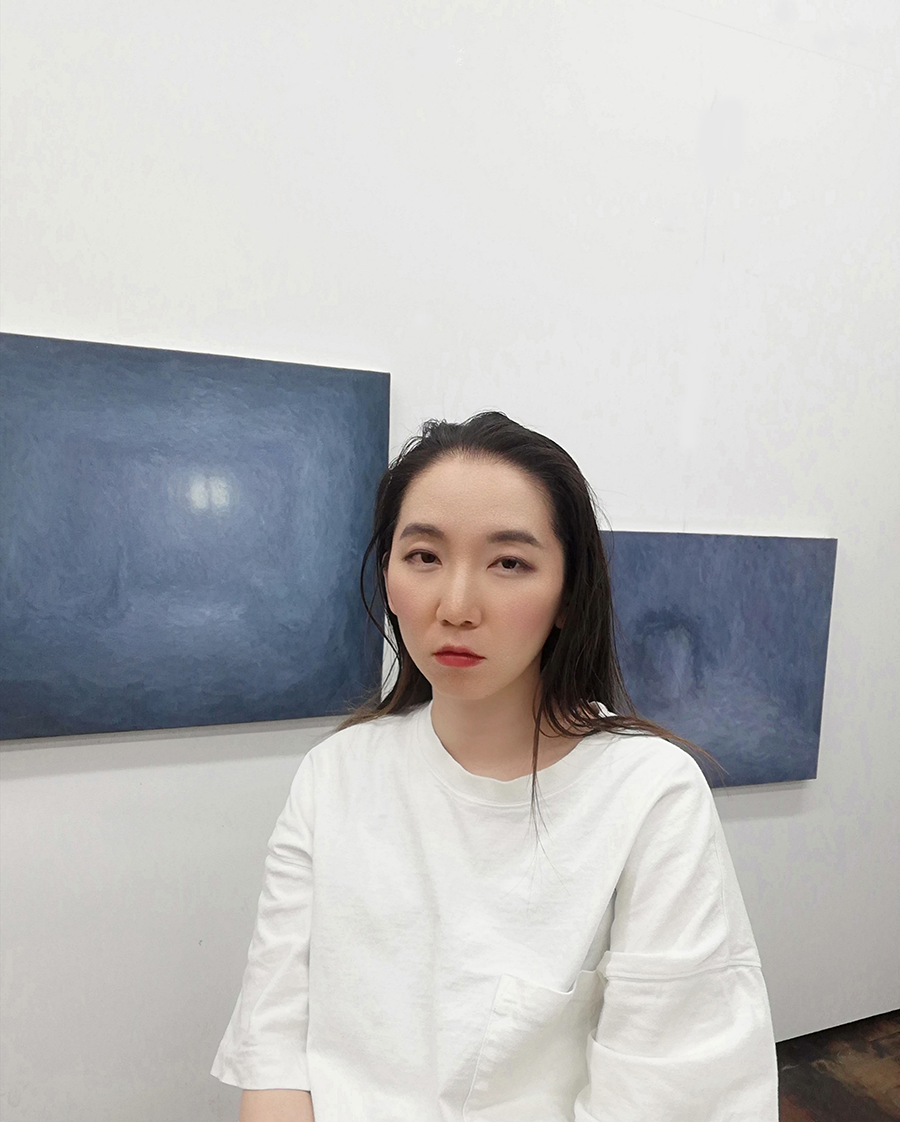
Career
| 1988 | Born in Tokyo |
|---|---|
| 2013 | Graduated from Musashino Art University, Faculty of Art and Design, Department of Oil Painting, Major in Oil Painting |
| 2015 | Completed oil painting course at Musashino Art University Graduate School of Art and Design. |
exhibition
Solo exhibition
| 2018 | “When you touch that world, therefore,” (TOKAS Hongo, Tokyo) |
|---|
group exhibition
| 2017 |
“Gunma Youth Biennale 2017” (Gunma Museum of Modern Art, Gunma) “BankART LifeV Tourism” (BankART Studio NYK, Kanagawa) |
|---|---|
| 2019 |
“Shell Art Award 2019” (The National Art Center, Tokyo) “3331ART FAIR 2019” (3331 Arts Chiyoda, Tokyo) |
| 2020 | “Stones dive, leaves swim” (gFAL Musashino Art University, Tokyo) |
| 2021 | “Room, Forest” (Bient Arts Gallery, Gunma) |
| 2022 | “Picturesque Landscape” (Borderless Art Museum NO-MA, Shiga) |
Awards etc.
| 2015 | Musashino Art University Graduation/Complete Work Exhibition 2015 Laboratory Award Musashino Art University |
|---|---|
| 2017 | 32nd Holbein Scholarship Holbein |
Reference work “The room and the puppet, something else 2021-2022”
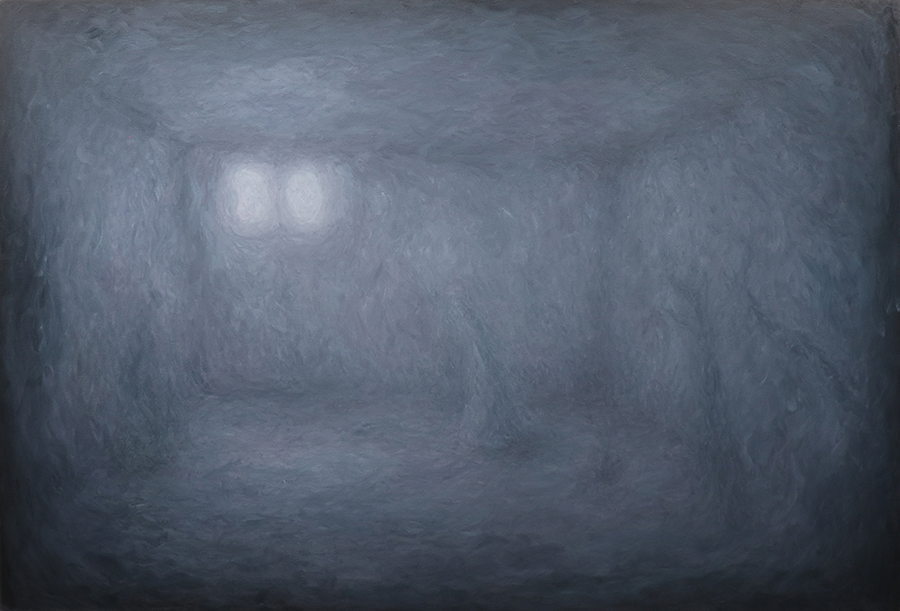
Techniques: oil painting, mineral pigments, canvas
130.7 x 194.4cm
About the work/production
Violence, discrimination, betrayal, bullying. Society sometimes becomes a difficult environment to live in. In search of a place of peace, I began to create an invisible world that was not real.
I'm currently living deep in the mountains. In a pitch-black forest, you may feel a strong presence of something even though you shouldn't be able to see it. The world is not all about what can be seen visually. An existence like the human heart and spirit, steam and air, and God. I believe that trying to see things that cannot be seen and making them visible and felt is one way for people to understand the world more strongly and live more deeply.
Judge Masuda’s recommendation comment
Without fear of misunderstanding, I sometimes think that it is okay for artistic expression to have the freedom to not have anything to do with reality. It is precisely because the reality is so harsh that we want to think about the possibility of expression as an imaginary asir (shelter), rather than a form of comfort or diversion. You can feel a glimpse of this in the painting spaces that Mr. Fukuda depicts. In most cases, some kind of isolated motif is depicted in a gray space. Although the boundary between space and motif is vague, it is not indistinct; the carefully layered brushstrokes depict invisible elements, such as the rustling of the flowing air or the minute trembling of the motif. It seems to be a process of looking at vague mental anxieties, giving them form, and overcoming them. Space is not closed. Most of the paintings depict windows, holes, and rays of light that seem to be streaming in, suggesting an outside world. The motif may eventually go out. Then another motif comes into the painting space. I guess it's just a repetition.